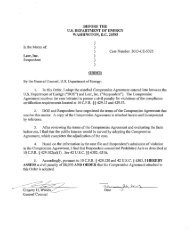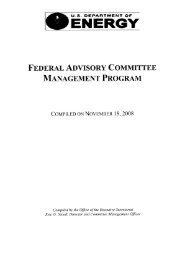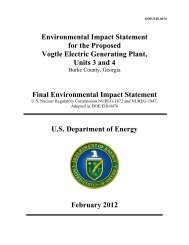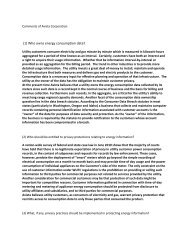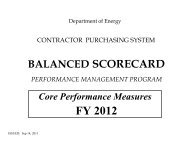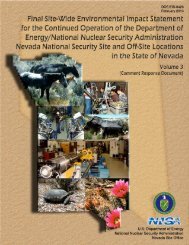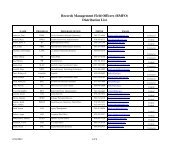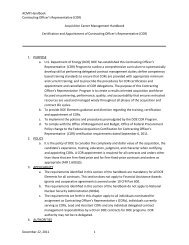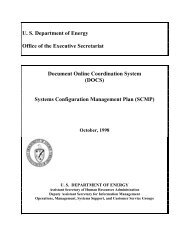Metrics for Measuring Progress Toward Implementation of the Smart ...
Metrics for Measuring Progress Toward Implementation of the Smart ...
Metrics for Measuring Progress Toward Implementation of the Smart ...
You also want an ePaper? Increase the reach of your titles
YUMPU automatically turns print PDFs into web optimized ePapers that Google loves.
TABLE 2.1. LIST OF PARTICIPANTS<br />
Name<br />
Organization<br />
Bruce Baccei<br />
SMUD<br />
Dick DeBlasio<br />
NREL<br />
Ward Bower<br />
Sandia National Laboratories<br />
James Calore, Group Spokesperson PSE&G<br />
J. Larry Dickerman, Expert Leader American Electric Power<br />
Doug Houseman<br />
Capgemini<br />
Ken Huber<br />
PJM Interconnection<br />
Mike Jung<br />
Silver Spring Networks<br />
Stanley Klein<br />
Open Secure Energy Control Systems, LLC<br />
David Michel<br />
Cali<strong>for</strong>nia Energy Commission – PIER<br />
Michael Montoya<br />
Sou<strong>the</strong>rn Cali<strong>for</strong>nia Edison<br />
David Nichols<br />
Rolls Royce Fuel Cell (US)<br />
Brad Roberts<br />
S&C Electric Company<br />
Merrill Smith<br />
U.S. Department <strong>of</strong> Energy<br />
Morghan Transue<br />
DOE (observer)<br />
Hunter Hunt<br />
Hunt Power LP<br />
Robert Thomas<br />
Cornell University<br />
Joseph Waligorski<br />
FirstEnergy Service Company<br />
Tammy Zucco<br />
ABB Inc.<br />
Bonnie Ram, Facilitator<br />
Energetics Incorporated<br />
TABLE 2.2. COMMENTS ON THE CHARACTERISTIC<br />
• This area is very broad and must focus not only on <strong>the</strong> technology and <strong>the</strong> industry, but <strong>the</strong> consumers. Should evaluate “whom”<br />
<strong>the</strong> smart grid is trying to accommodate. This would include: third party developers; regulators; utilities; aggregators (service<br />
providers).<br />
• Also need to consider all generation and storage options as well as anywhere on <strong>the</strong> transmission and distribution system. The<br />
options would include <strong>the</strong> following: Large conventional generation (both utility owned and IPP owned); wind farms; solar farms;<br />
process steam; house level solar; small CHP; large CHP; small wind; PHEV; large compressed air storage; MW-sized storage (on<br />
T&D); small residential storage; MW-sized traditional; gas peaking; emergency diesels & backup ICE; fuel cells<br />
• Recognize that <strong>the</strong> grid currently accommodates large central station generation and large scale storage (e.g., pumped water<br />
storage).<br />
• O<strong>the</strong>r central issues to consider include: Which side <strong>of</strong> <strong>the</strong> meter is it on Who regulates What is <strong>the</strong> size How should storage<br />
and generation be split<br />
• Serious consideration <strong>for</strong> revised wording to, “Accommodating all generation and storage options on <strong>the</strong> distribution system and<br />
renewable resources and storage on <strong>the</strong> transmission system,” but decided to remain with <strong>the</strong> original characteristic.<br />
Energetics Incorporated 8 July 2008



